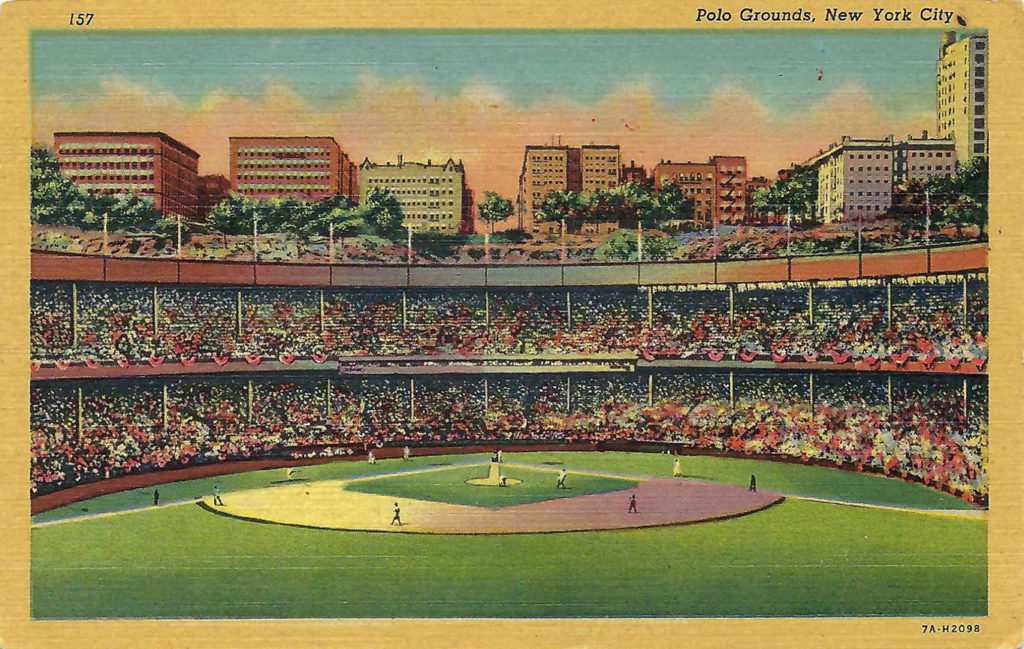
Michael Bushnell
Publisher
This week we continue our tour of baseball stadiums now long forgotten.
The Polo Grounds was the name of three stadiums in the Upper Manhattan borough of New York City that was used mainly for professional baseball and football from 1880 through the 1963 football season.
The original Polo Grounds, opened in 1876, was constructed specifically for the sport of polo. In 1880 it was converted for the use of baseball and became home to the New York Metropolitans from 1880 through 1885.
Demolished in 1889, a new facility was constructed that ultimately burned in 1911. A new Polo Grounds was built and was noted for its unique shape that resembled a bathtub, creating an extremely long center field.
The Polo Grounds was the home field of the New York Yankees from 1913 through 1922. The New York Mets played their first two seasons at the Polo Grounds in 1962 and 1963. Throughout history, at least four World Series games were hosted there in 1905, ’11, ’12, ’13, ’17, ’21, ’22, ’23, ’24, ’33, ’37, ’51 and 1954. In both 1934 and 1942, the Polo Grounds was the site for Major League All Star games and Mel Ott hit his 500th home run at the grounds on August 1, 1945.
The New York Giants also called the Polo Grounds home from the 1891 season through 1957.
The last sporting event at the Polo Grounds was a football game between the New York Jets and the Buffalo Bills on December 14, 1963 in which the Bills beat the Jets with a score of 19-10 on a blustery 35 degree day. The grounds were the site for a variety of other sporting events such as boxing, including the 1923 championship fight between Jack Dempsey and Luis Firpo.
With the opening of newly constructed Shea Stadium in 1964, the Polo Grounds began a slow fade into history. Over a period of four months, it was slowly demolished. A public housing complex named the Polo Grounds Towers was erected on the site.
A plaque commemorates where the ballpark was once located. The only other reminder of Polo Grounds is the John T. Brush Stairway which leads down to Coogan’s Bluff where the ballpark was once located.



















